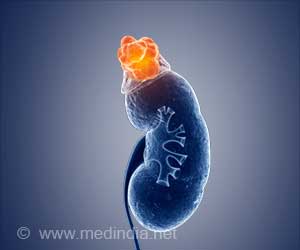- Cancer cells manipulate their environment to promote tumor growth instead of being attacked
- Single-cell sequencing technology reveals the interaction between metastatic tumor cells and healthy bone marrow cells
- Targeting specific proteins could potentially restore altered immune cells and improve treatment outcomes
Single-cell transcriptomics and epigenomics unravel the role of monocytes in neuroblastoma bone marrow metastasis
Go to source). The most common solid tumor in newborns and young children is neuroblastoma. Despite progressively improved treatment choices, more than half of individuals with a particularly aggressive variety (high-risk neuroblastoma) experience relapses. “We specifically studied bone marrow metastases because recurrences often originate there. The tumor cells seem to manipulate their environment so that it supports their growth instead of fighting them,” explains Sabine Taschner-Mandl, Head of the Tumor Biology Group at St. Anna Children's Cancer Research Institute (St. Anna CCRI).
How Cancer Cells Influence Their Surroundings
Using single-cell transcriptomics and epigenomics, the researchers investigated the cell architecture and cell-cell communication of neuroblastoma metastases from two major genetic subgroups (MYCN amplification or ATRX mutations) and those without such modifications. “Until now, only primary tumors have been studied in such detail, but not neuroblastoma metastases,“ says Irfete Fetahu, PhD, co-first author as well as the co-corresponding author of the study and postdoc in the Tumor Biology Group.The researchers looked into the interaction of metastatic tumor cells with healthy bone marrow cells in greater depth. “We developed algorithms that enabled us to analyze different cells in the bone marrow as well as to model their interactions,” emphasizes Fortelny, head of the Computational Systems Biology Group, Paris Lodron University of Salzburg. "Our analysis has shown that certain cells, so-called monocytes, react to unwanted invaders. In the course of this, they foster growth processes and release cytokines that stimulate tumor growth,” explains Fetahu. Interestingly, investigations at the epigenetic level showed that although monocytes in the tumor microenvironment are activated to attack cancer cells, they are unable to respond appropriately to these signals. “These monocytes receive contradictory messages. As a result, they are no longer able to fight the tumor,“ Fetahu explains the dilemma.
Inhibit Pathogenic Immune Cell States
The proteins MK (midkine), MIF (macrophage migration inhibitory factor), and related substances govern the communication between neuroblastoma cells and bone marrow or monocytes. These proteins' signaling pathways are activated in immune cells. “Drugs targeting MK and MIF disrupt this pathological interaction and are currently under investigation. Through selective inhibition, it could be possible to return these pathologically altered monocytes to their original state,“ says Taschner-Mandl.Metastases Behave In Different Ways
The researchers also discovered that cellular plasticity, or the ability of cells to alter in response to environmental cues, is preserved throughout metastasis. Furthermore, the gene expression of metastatic tumor cells is affected by the neuroblastoma genetic subtype. When neuroblastoma cells with MYCN amplification spread from the main tumor to the bone marrow, they change relatively minimally, whereas tumor cells with ATRX mutation exhibit substantial changes. “The genetics of the tumor leads to characteristic signals and thus very specific changes in the microenvironment of the bone marrow, which is expressed in individual signatures,” says Taschner-Mandl. “This could explain why neuroblastoma patients with ATRX mutations often respond poorly to therapy.”Reference:
- Single-cell transcriptomics and epigenomics unravel the role of monocytes in neuroblastoma bone marrow metastasis - (https://pubmed.ncbi.nlm.nih.gov/37365178/)











